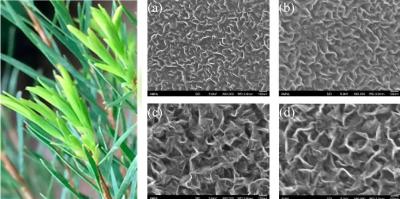Scientists at James Cook University in Queensland, Australia, and collaborators from institutions in Australia, Singapore, Japan, and the US have developed a new technique for growing graphene from tea tree extract. Graphene is only made of carbon atoms, so theoretically can be grown from any carbon source, but scientists are still looking for a graphene precursor and growth method that is sustainable, scalable, and economically feasible, since these are all requirements for realizing widespread commercialization of graphene-based devices.

In this study, the researchers have grown graphene from the tea tree plant Melaleuca alternifolia, a plant used to make essential oils in traditional medicine. They demonstrated that it is possible to fabricate large-area, nearly defect-free graphene films from tea tree oil in as little as a few seconds to a few minutes, whereas current growth methods usually take several hours. Unlike current methods, the new method also works at relatively low temperatures, does not require catalysts, and does not rely on methane or other nonrenewable, toxic, or explosive precursors.
For the purpose of growing graphene, the researchers used a technique called plasma-enhanced CVD. They put the vaporized tea tree extract into a heated tube, similarly to methane gas in previous versions. As soon as they switched the plasma on using electrodes, the vapor was almost instantly transformed into graphene film. The resulting graphene grown has a particularly large surface area and long edges, with the scientists estimating the total length of the edges in one square centimeter to be 2.6 km. Graphene with long edges can offer advantages for many applications, including battery electrodes and chemical sensors.
An additional unique property of the graphene grown in this study is that it is said to be one of the most hydrophobic graphene samples to date. These results suggest that this graphene may have applications for creating various superhydrophobic coatings and surfaces, such as for medical devices and textiles that repel water.
The researchers also expect that the graphene films produced from the tea tree extract have potential applications in next-generation nonvolatile memory devices called memristors, which store memory in their levels of electrical resistance. They demonstrated this possibility by sandwiching a semiconductor between graphene and aluminum, creating a device that exhibits memristive properties.